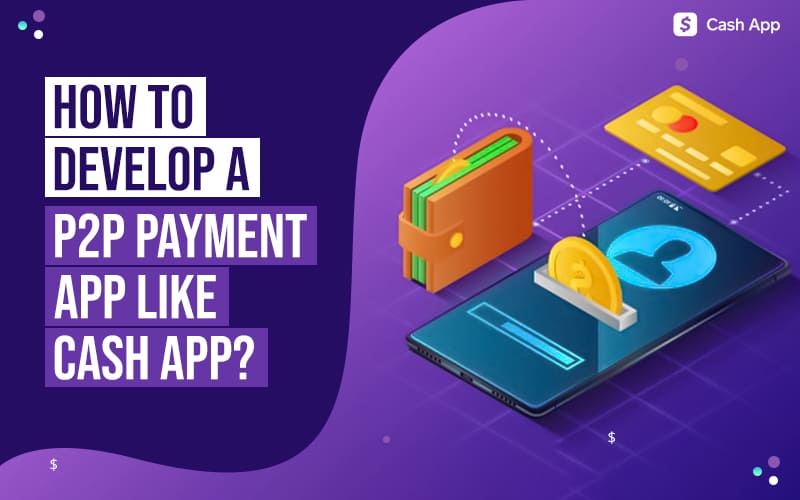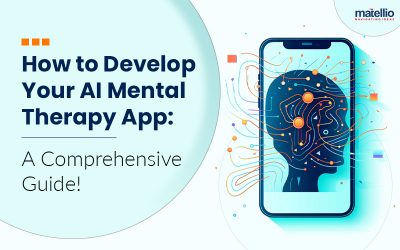How To Develop A P2P Payment App Like Cash App?
Most of us have sent and received money through the internet at some point, and it’s a pretty simple way to keep track of our funds. Many things are going to change around each other that we’d have no idea about because the world is gradually developing and moving in rhythm with technology every day. In order to make transfers more accessible to everyone, an app like Cash App was launched in the United Kingdom.
Today’s fintech business is evolving at a breakneck speed. In the future, and beyond it, we can clearly see a zero-cash future. Many people over the globe embrace smartphones because of the convenience, comfort, and security they provide. Personal financial app development is in high demand these days. When it comes to personal finance apps, aspiring entrepreneurs are attempting to disrupt the market by creating apps such as Cash App!
Don’t know what Cash App is all about? Don’t worry; we’ll have you covered! In this blog, we will look on p2p payment app development.
We will also discuss features, benefits, and steps to build a bespoke app like Cash App. So, let’s go!
Before moving further in personal finance app development. Let’s talk about
What is a Cash App? Is it worthwhile to invest?
Cash App is a peer-to-peer payment application that lets you send, receive, and request money from other people. The funds will display as credit in your Cash App account. Another alternative is to link your Cash App account to an existing bank card and use it to send and receive money.
A card connected to a current account can be used to finance your Cash App account. User can also move money from your Cash App account to your bank account, which takes two to three days in most cases. Users can use Cashcard to pay in any store or on any e-commerce site. Users can withdraw monies through ATM and credit cash using Apple Pay or GPay, just like they can with conventional credit or debit cards. Though monetary transactions can take up to three days, they can use the Instant Deposit service for immediate transfers.
According to the report, the market for mobile P2P payment apps is estimated to reach $346 billion by 2022. In the first half, five out of ten top fintech investments went to businesses in the payments and transactions space.
The numbers can define the popularity of such apps in the current and future market. Moving on, if you’re looking forward for P2P payment app development, then the coming section is so important for you.
Let’s move forward and discuss,
What are the key features that make your mobile payment app developers a huge hit?
Well, there are tons of functionalities that you can consider during developing an app like Cash App! As the prominent personal finance app development company, below, we’ve mentioned some of the key features of payment app development. So take a look!
- History – Customers can check the history data of all their previous transactions, which is where the business adds value for them. Filters that allow users to choose which date range of transactions as well as maintain track of payments and receivables are also widespread in P2P mobile apps.
- Login – Users ought to be able to sign up for the app easily using their social media accounts or a phone number. User involvement will be greater if you introduce less friction at this point. Keep in mind that you can collect user information later on when they apply for additional services.
- Billing – Users must be able to scan and submit bills that allow them to make payments utilising a peer-to-peer payment app. It’s also a nice idea to have an integrated feature that allows users to create transactional invoices and save them within the application.
- Chatbot – Peer-to-peer payment systems must include a chatbot that can answer all questions that may arise during the transaction of payments, including incorrect account/wallet withdrawals and once the user loses internet access.
- Live chat – Despite the fact that payment applications excel at eliminating the need for face-to-face interaction with a cashier, your consumers are still likely to ask for assistance. And dealing with such circumstances via live chat with your reps can be a fantastic way to go.
- Set unique ID – To enable safe P2P mobile payment application, users must be given a unique ID and password each time they initiate a payment for enhanced verification. This is done for security reasons, and all transaction data should be visible to users. To maintain a stronger level of security, certain P2P payment service providers need the OTP each time the app is launched.
- Geolocation – This feature now allows anyone or any business to take mobile payments regardless of their location. GPS tracking and navigation is one of the most important in-built elements of payment mobile app development, owing to geolocation. Users can utilise GPS to locate people on their devices and make payments by simply tapping on the specific user’s name. Because no accounts information is needed and the transaction is completed quickly, this function saves time.
- Notifications – A P2P mobile payment records the payment’s commencement and completion, and then sends a live notification and update to the recipient’s account or wallet. User notifications could also be used to alert users about approaching bill due dates, discounts, and special offers, among other things.
- Track expenses – Spending analysis is a functionality that you should incorporate in your payment mobile app so that consumers can track their spending. It helps consumers to better manage their spending and set spending limits if necessary.
- Transfer to bank – In general, customers appreciate it when a P2P payment app allows them to move funds from the app to their bank account. This functionality is tied to a separate business model in each Mobile Payments app. A fixed amount of transfer charge is required for bank transfers.
Now, let’s check,
How to make a mobile payment app? Key points that you need to remember!
Key points that you need to remember during personal finance app development are:
1. Decide application’s platform
To make a personal loan mobile app, you must first decide which platforms it will be compatible with. Will it solely be available on Android, or do you want to create specific mobile apps for iOS users as well? Cross-platform app development frameworks are a smart idea to explore if you’re targeting mass users. Choosing this will also help you to decrease personal finance app development cost.
2. Sketch your idea
Hand sketching is a terrific technique to get your thoughts down on paper. The team is brought together by a clear UX sketch. When everything is written down, practically everyone in the firm can visualise the app and comprehend what they are attempting to create. A UX designer usually creates wireframes as a framework for graphic designers to fill in the details. Wireframes should be significantly more detailed and have more panels than sketches.
3. Start development
The development phase is where you start writing the code for the application’s “final” version. This is when you apply the input from the wireframes to make some final, perhaps significant decisions.
That’s where flow and agile approaches can be deployed. In general, while designing a mobile application, an agile approach is preferable.
Throughout this phase, it’s also vital to integrate an analytics engine into your app. Create events for every conceivable user interactions so you can understand how your app is being used how users are moving around.
4. Test the app
Testing should, ideally, need to consider concurrently with the development stage. To keep post-release expenses low, it’s critical to test frequently. Unit testing, user interface testing, and integration testing are all required to catch any severe errors or oversights as soon as possible. Test cases can add time to the development process, but they can drastically cut the time and money spent on delivery and upgrades in the long term. Checking will also save you money in the long run when it comes to app maintenance. You can implement all of your test cases after making a minor change to see whether your modifications have broken other portions of the application.
5. Maintain the app
This point should start at the same time as the release and go in the same direction. Maintenance and support is the process of checking on the state of your application, fixing any errors that may have appeared, and ensuring that it continues to function properly. Updating your application to support new smartphones or new versions of the OS is indeed part of upkeep.
Your app’s ongoing maintenance is never complete. You will be keeping your app indefinitely until you decide to stop supporting it (possibly abandoning your users).
6. Hire a team
In order to include above mentioned features and to make your app standout from rest, you need to hire a top personal finance app development company to accomplish this task. As P2P mobile app development is not a simple task. You need to have following members in your development team:
- Frontend and backend developers
- iOS developers
- Android developers
- QA engineers
- UI/UX designer
If you are searching for a top mobile app development company to build an app like Cash App, contact us. Our experts are ready to assist you.
Now, let’s check,
How much does P2P mobile app development cost?
The final cost of payment app development depends on your requirements and numerous factors like:
- Region
- App’s complexity and features
- Tech stack
- Platform, and many more
If you want a final quote of developing an app like Cash App, then reach out to the top personal finance app development company. They will help you in this.
Conclusion
We hope you’ve liked the information provided in this blog. While some businesses may be hesitant to dive into P2P payment app development at first, it has the potential to be a game-changer in the financial sector. Ultimately, the process of creating a P2P payment app is comparable to that of creating any other complex and secure application. It has to go through various stages of development. The procedure varies depending on the level of an idea’s preparation and the product’s total complexity. Finding an app development team capable of providing a detailed cost estimate is the right choice.
If you are looking for the app development company, contact us.
Matellio is a leading provider of peer-to-peer (P2P) app development services. For industry beginners as well as established businesses, we deliver top-notch and feature-rich FinTech apps. So, your search for the top FinTech app developers has come to an end. Contact us.







